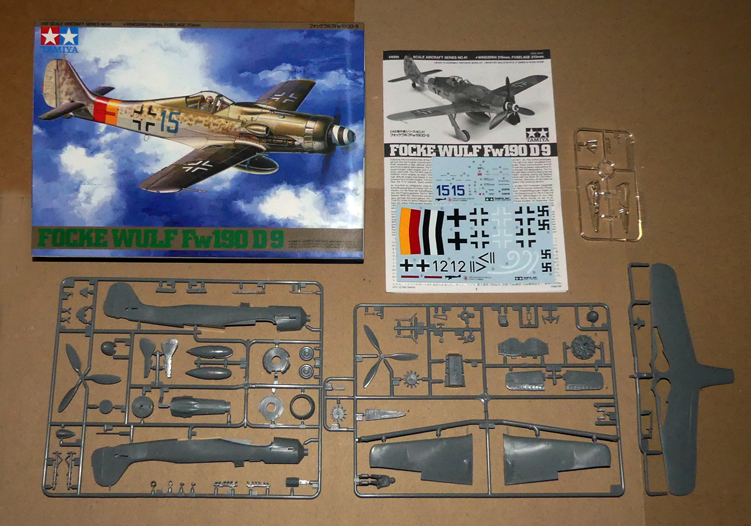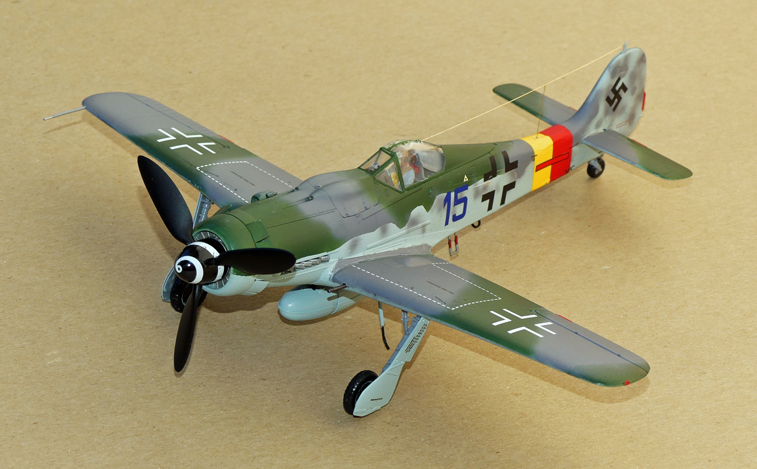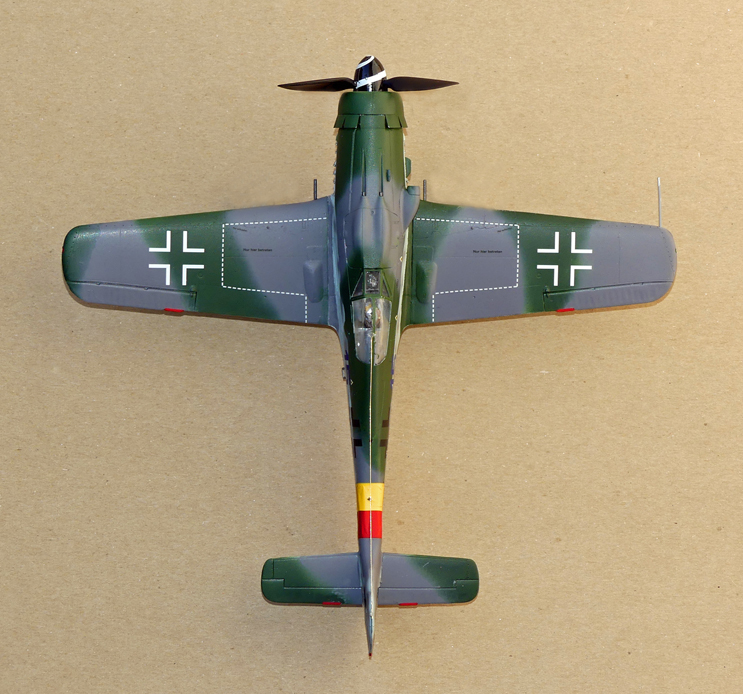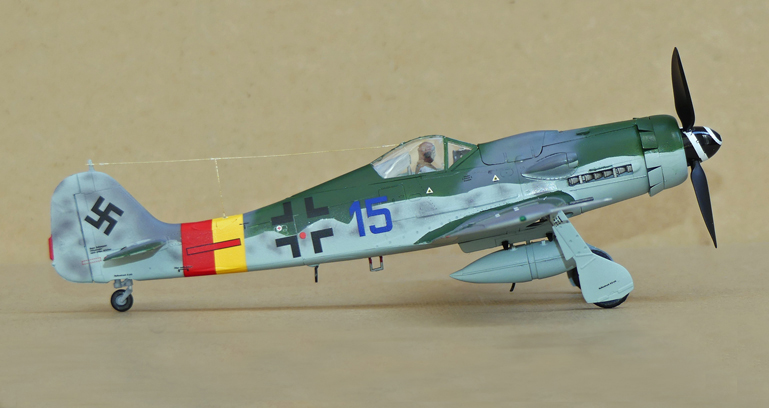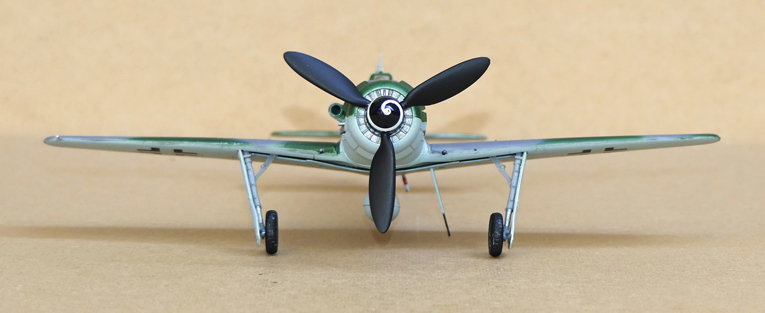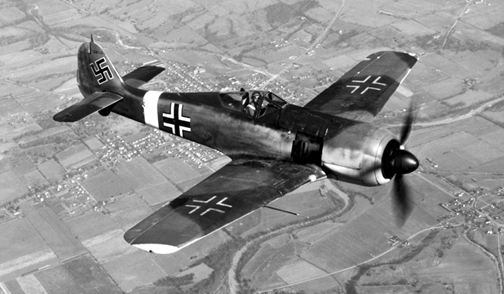 ……...
……...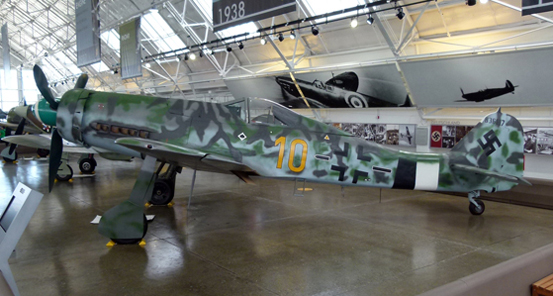
 ……...
……...
Origins of the Fw 190 come from a 1937 Reichsluftfahrtministerium (Ministry of Aviation), abbreviated RLM, endeavor to couple their new Bf 109 fighters with an interception-minded form. Kurt Tank (1898-1983) from the Focke-Wulf concern had become convinced of the merits of a well-streamlined fighter fitting a radial-piston engine to compete with any then-known inline engined fighter types, including Germany's own Bf 109. Additionally, radial aircraft offered more simplicity in manufacture and operation when compared to the complexity required of the liquid-cooling function of inline engine fighters. Additionally, there was an understanding that two frontline fighters would be competing for a single stock of Daimler-Benz DB601 inline engines so selection of a radial engine for the new Focke-Wulf fighter would be radial in nature, bypassing any powerplant competition with the Messerschmitt product.
Production totals benefitted the Fw 190 line as a whole and the type saw service on all the fronts that the German military committed to. Despite the availability and general excellence of the competing Bf 109, pilots tended to score their Fw190s higher between the two German fighters - such was the respect given the product. Fw 190s fought in the Mediterranean, Eastern, and Western theaters during their war time tenure which went generally undetected by the Allies for a greater part of 1941 and 1942. This all changed when a German pilot mistakenly landed his Fw 190 at an English airfield, providing the needed bounty of information for the Allies as examination and study of the new German fighter ensued. The Allies would now understand what they were up against and work feverishly to counter it.
First combat actions involving Fw 190s were in February of 1942 when the nimble little fighters were called to cover the retreats of several prominent German naval warships escaping to friendly ports for self-preservation. Attacking British torpedo bombers were dealt with swiftly as they attempted to damage and sink the German vessels which brought a taste of the firepower and capabilities inherent in the new German design. Fw 190s proved highly agile and fast, capable of tangling with all known Allied fighter types of the period. In August of 1942, the Fw 190 was used in anger against invading Allied forces during the Dieppe Landings that proved a disastrous endeavor for the enemy - ninety-seven RAF aircraft were claimed in the operation with Fw 190s playing their part to perfection.
Over 20,000 Fw 190s were produced from the first prototype in 1939 through 1945. There were almost 80 variants including trainer, fighter, fighter/bomber, night fighter torpedo bomber, reconnaissance, high altitude bomber interceptor and ground attack versions.
Despite the short operational tenure, Fw 190s left an undeniable impression on observers during and after the war. Indeed even famed American aviator and aviation pioneer Chuck Yeager remarked on how the Fw 190 was the only aircraft to match the P-51D Mustang following post-war flying of the German design. The evolution of the Fw 190 also forced the British to continually evolve their own Spitfires which ultimately produced the Spitfire IX mark capable of matching the latest Fw 190s.
The WW II era photo above is an early Fw190 but not a “D” model. Note the shorter fuselage and different exhaust manifold. I took the color photo at the Flying Heritage & Combat Armor Museum in Everett, Washington of the only Fw 190 D-13 to have survived the war. The aircraft entered service in March of 1945 and served as the commander’s plane of Jagdgeschwader (fighter wing) 26. While fully restored and airworthy, it will never be flown because of the risk of damaging or losing a unique aircraft.
Facts and General Characteristics of the Focke-Wulf Fw 190 D-9 Dora:
Contractor: Focke-Wulf Flugzeugbau AG, Germany
Type: Fighter and bomber
Crew: 1
Wingspan: 34.45 feet (10.5 m)
Length: 33.46 feet (10.2 m)
Height: 10.99 feet (3.35 m)
Weight Empty: 7.694 lbs. (3,490 kg), Loaded: 10,688 lbs. (4,848 kg)
Powerplant: 1 X Junkers Jumo 213A-1 inverted V piston engine developing 1,176 horsepower driving a three-bladed propeller unit at the nose.
Max speed: 426 mph (685 kph)
Rate of climb: 2,812 ft./min.(857 m/min.)
Ceiling: 39,370 feet (12,000 m)
Range: 519 miles (835 km)
Standard Armament:
2 X 13mm MG 131 machine guns in engine cowling.
2 X 200 MG 151 cannons in wing roots.
Optional Armament:
External payload of up to 1,102 lbs. (500 kg)
2 X Machine guns or 20 mm cannons in outboard wing positions
2 X Cannons in underwing gun pods
1 X Bomb under fuselage centerline
2 or 4 X Underwing bombs
Underwing aerial rockets
1 X 30 mm cannon firing through the propeller hub
6 X Cannons (two in cowling, two in wing roots, two in wings)
Facts and General Characteristics of the Model:
This model is a reproduction of a Focke-Wulf Fw 190 D-9 Dora flown by 4./JG301 based in Staubing, Bavaria, 1945 as indicated by the “Defense of the Reich” band toward the rear of the fuselage.
Manufacturer: Tamiya, Inc., Japan (made in Philippines)
Scale: 1/48
Parts: 50
Decals: 48
Wingspan: 8.75"
Length: 8.25"
Height: 2.2"
Hours to build and paint: 22.5
Mistakes/problems:
1. This was my first try at using an airbrush so there are many painting mistakes.
2. I broke the pilot’s step in half and had to super glue it together.
3. The propeller decal did not go on cleanly.
4. The “Defense of the Reich” band decal did not go on cleanly – it bubbled up on top.
5. The main landing gear did not go on straight.
